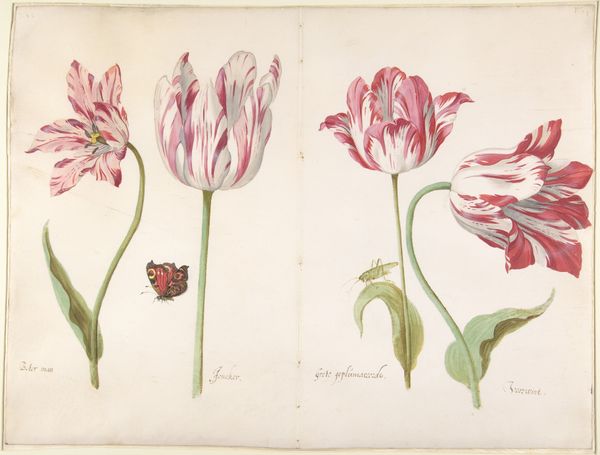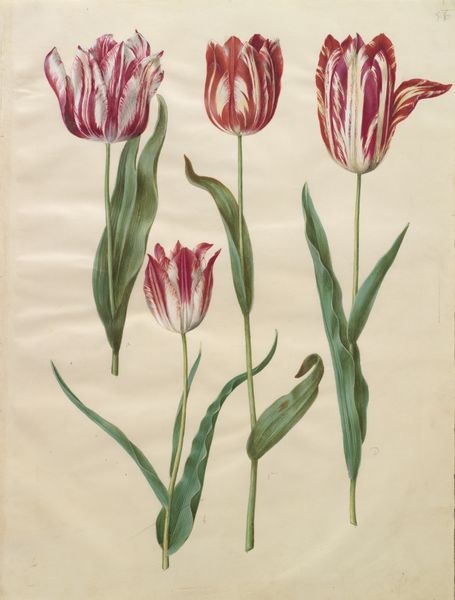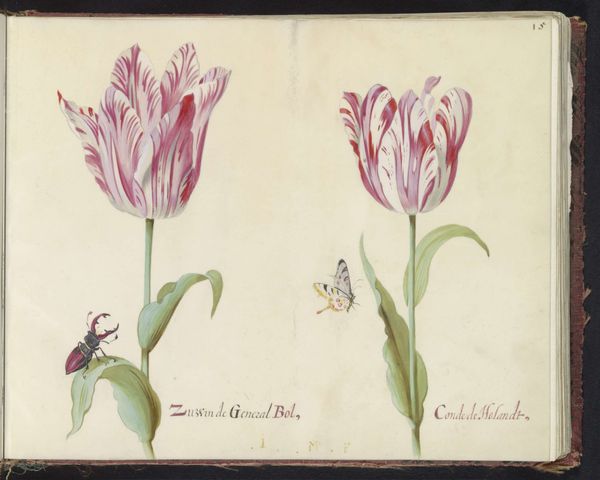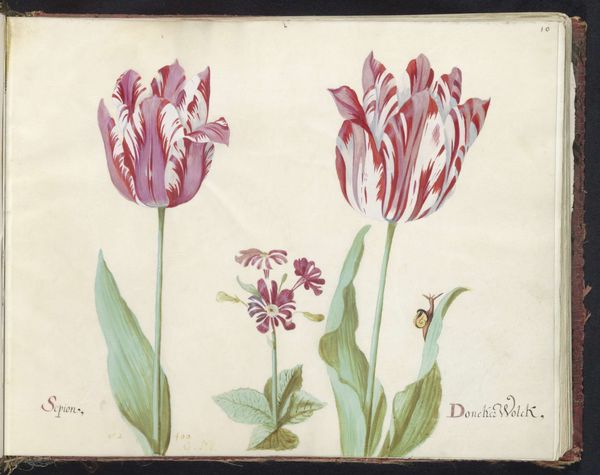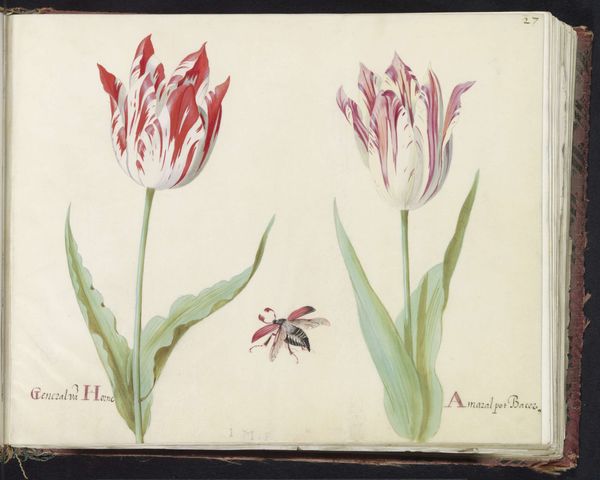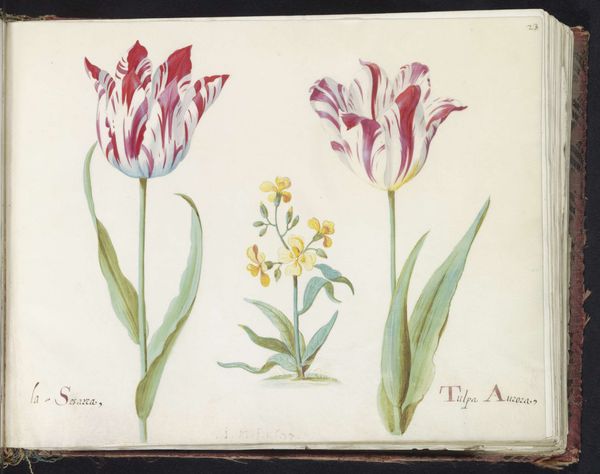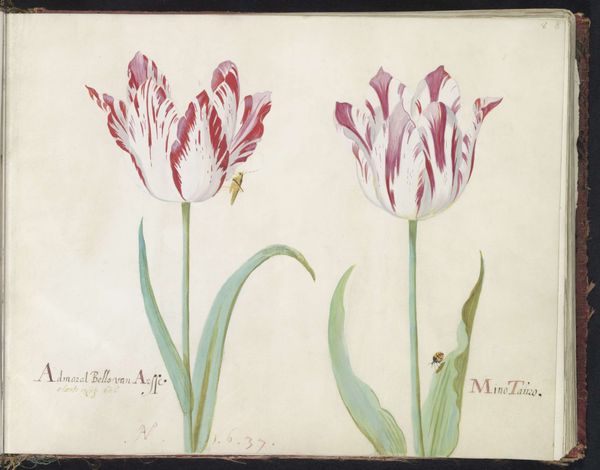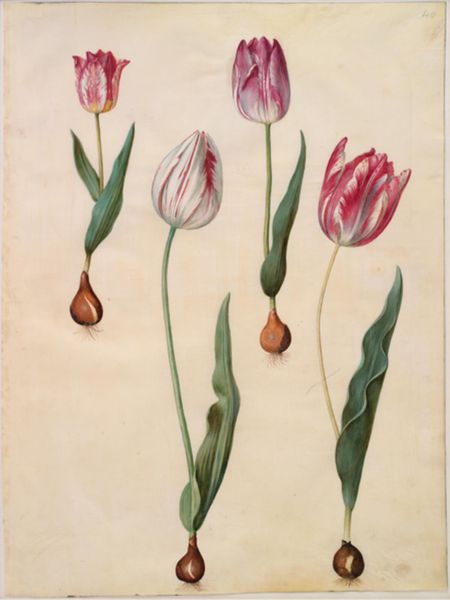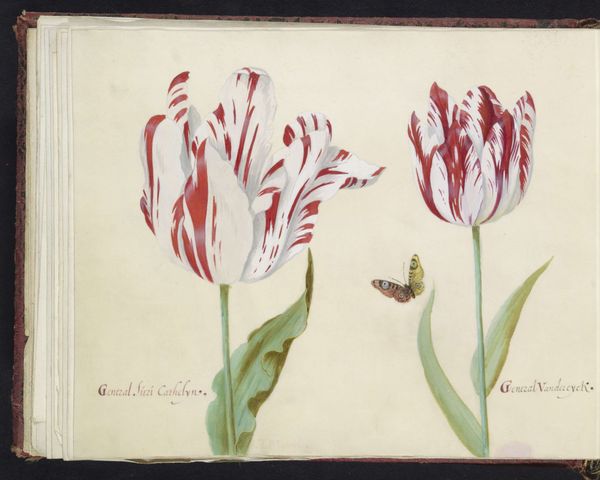
drawing, painting, paper, watercolor
#
drawing
#
water colours
#
dutch-golden-age
#
painting
#
paper
#
watercolor
#
watercolour illustration
#
botanical art
#
watercolor
Dimensions: height 340 mm, width 449 mm
Copyright: Rijks Museum: Open Domain
Curator: Welcome. Before us is "Sheet from a Tulip Book," a watercolor and ink drawing on paper, created around 1640 by Jacob Marrel. It resides here at the Rijksmuseum. Editor: My first thought is: delicate obsession. There's such fine detail in the rendering of each bloom and even the little insects. But there's a slight melancholy as well. The flowers are past their prime. Curator: It certainly encapsulates a key period. The Dutch Golden Age was marked by immense prosperity, fueled in part by tulip mania. Tulip books, like this sheet comes from, served as catalogs for potential buyers. They showcase coveted varieties with precise detail, a necessity before color photography. Editor: So these illustrations weren't just artistic expressions, but a visual commodity index of a speculative bubble. The named specimens – the 'Naire Wite' and 'S. Peter Roose' – each held value, literally? Curator: Precisely. Marrel, along with other artists, played a crucial role in the trade. The highly detailed depictions highlighted the unique characteristics of each bulb. Color variegations, stem length, and even subtle flaws could influence prices dramatically. They were propagating and perpetuating desires through imagery. Editor: Look closely, and it is more than pure documentation. These blooms and the insects – tiny dragonflies and ladybugs—exist on this blank plane that brings an emotional quality. We sense time, transition, the brevity of life and luxury... there's something quite vanitas-like in the composition. The artist seems keenly aware of the fragile market in representing the withering beauty of each. Curator: I agree that tension permeates. Even those insects! We tend to perceive tulips as symbols of opulence. But those little creatures serve as potent memento mori reminders of life's transience. Their presence implicates how human economic systems affect the environment, as well. These are luxury objects that rely on exploited ecologies. Editor: That is such an important insight. What seems on the surface an elegant still life opens into wider societal considerations on how art becomes implicated in global power systems. Curator: Indeed. This work serves as a fascinating portal, reflecting the complex interplay of commerce, art, and ecological concern within the historical landscape. Editor: Thanks. Seeing the drawing, and understanding the political-economic dimensions adds so much to what one might initially perceive about such period pieces.
Comments
rijksmuseum about 2 years ago
⋮
Flowers were costly, and tulips the costliest of all. Tulip bulbs were avidly collected in the 17th century and large sums changed hands for unusual specimens. The tulip book’s exact function is not known. It could have been a catalogue from which an interested buyer made his selection, or a drawn inventory of a collection of tulips.
Join the conversation
Join millions of artists and users on Artera today and experience the ultimate creative platform.
